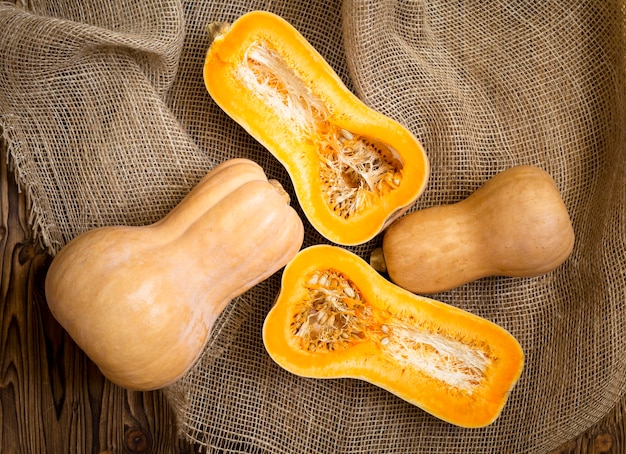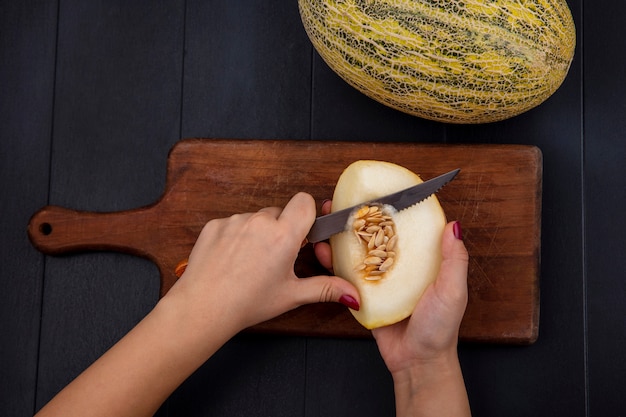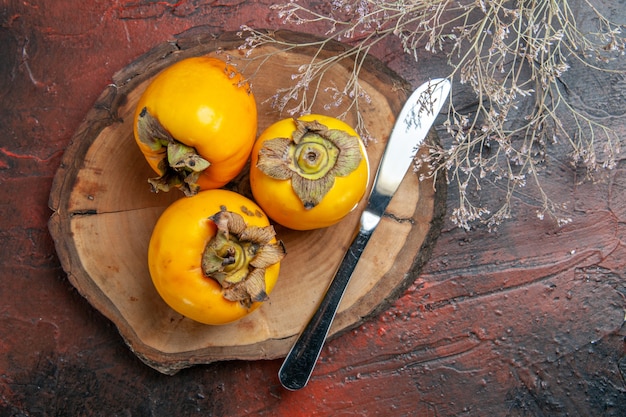(Part 1) The Acorn Squash: A Little Background

Why I Love Acorn Squash
Before we dive into the nitty-gritty of baking, let's talk about why I'm so smitten with acorn squash. First off, it's just downright gorgeous. That vibrant orange colour, the unique shape, the slightly textured skin – it's a feast for the eyes before you even take a bite! And the flavour? Oh, the flavour! It's got this sweet, nutty, and subtly earthy taste that's just perfect for autumn. It reminds me of crisp evenings, crackling fireplaces, and the warm comfort of home.The nutritional powerhouse
But acorn squash isn't just pretty; it's a nutritional powerhouse. It's brimming with vitamin A, which is crucial for healthy vision and skin. It's also a great source of vitamin C, a potent antioxidant that supports immunity. And let's not forget the potassium, essential for regulating blood pressure and maintaining healthy muscle function. And if that's not enough, it's packed with fibre, which aids in digestion and keeps you feeling full. Seriously, this little squash is a real health hero!The Versatility of Acorn Squash
Beyond its health benefits, acorn squash is incredibly versatile. You can roast it, bake it, stuff it, mash it, use it in soups, salads, and even desserts. It's a blank canvas for your culinary creativity. I've used it to make everything from simple side dishes to hearty main courses, and it never fails to impress.(Part 2) Choosing the Perfect Acorn Squash

Size Matters
For most recipes, you'll want a medium-sized squash, around 1 to 1.5 pounds. They're usually just the right size for a single serving or two. If you're feeding a crowd, you might want to grab a few larger ones.Look for a Firm Texture
Give the squash a gentle squeeze. It should feel firm, not soft or squishy. A firm texture means it's ripe and ready to be cooked. If it feels a bit too soft, it might be overripe and could have a slightly off flavour.Avoid Bruises
You want to avoid any squash with bruises, cuts, or soft spots. These blemishes can indicate damage that can affect the flavour and texture. It's always best to choose a squash that's free of any imperfections.Check the Stem
The stem should be firmly attached and dry. If it's loose or damp, the squash might be starting to spoil. This is a good indicator of how fresh the squash is. A firm, dry stem means it's been stored properly and is ready to be enjoyed.(Part 3) The Art of Preparing Acorn Squash

Washing and Drying
The first step is to give your acorn squash a good wash under cold running water. Scrub away any dirt or debris with a vegetable brush. Once it's clean, pat it dry with a clean kitchen towel. This ensures that you're starting with a clean canvas and getting rid of any lingering dirt or grime.Cutting the Squash
Now comes the fun part. Using a sharp chef's knife (or a sturdy paring knife), cut the squash in half lengthwise. The aim is to cut through the centre, separating the two halves. Be careful not to cut your fingers! If you find it difficult to cut the squash directly in half, you can try making a few shallow cuts around the circumference of the squash before cutting through the centre.Removing the Seeds
Once the squash is halved, use a spoon to scoop out the seeds and stringy fibres. You can compost these or save them to roast for a delicious snack. Roasting the seeds is a great way to add a bit of crunch and nutty flavour to your meals.Optional: Removing the Skin
You can choose to leave the skin on or remove it. If you're leaving the skin on, make sure to pierce it a few times with a fork to prevent the squash from exploding in the oven. The steam created during baking needs to escape, so piercing the skin helps to avoid any messy surprises. If you're removing the skin, use a sharp knife to carefully cut around the edges of the squash and peel it away. Peeling the skin can be a bit tricky, but it does make for a smoother presentation and allows the squash to absorb the flavours more easily.(Part 4) The Baking Process
With the squash prepped, let's talk about baking:Preheating the Oven
Preheat your oven to 400 degrees Fahrenheit (200 degrees Celsius). This will ensure your squash bakes evenly and quickly. This temperature allows for the squash to bake through thoroughly without burning the outer layer.Greasing the Pan
Grease a baking dish with a little butter, olive oil, or cooking spray. This will prevent the squash from sticking to the pan. A light coating of oil or butter creates a barrier between the squash and the pan, ensuring a smooth release and preventing any sticking.Placing the Squash in the Pan
Place the halved squash in the prepared baking dish, cut-side up. If you're removing the skin, you can simply place the flesh in the pan. This ensures that the squash is evenly exposed to the heat, resulting in even cooking.Adding Liquids
For a moist and tender bake, add a little water or broth to the bottom of the baking dish. You can also add a bit of honey or maple syrup for added sweetness. The liquid helps to create steam, which keeps the squash moist and prevents it from drying out.Baking Time
Bake the squash for 30 to 45 minutes, or until the flesh is tender and easily pierced with a fork. You can check for doneness by inserting a fork into the centre of the squash. If it slides in easily, it's ready! The baking time can vary depending on the size of the squash and the oven's temperature, so it's always best to check for doneness early and adjust accordingly.(Part 5) Variations and Flavour Boosters
The beauty of acorn squash is its versatility. You can experiment with different flavours and toppings to create endless variations. Here are a few ideas to get you started:Sweet and Savoury
Cinnamon and Brown Sugar: For a classic autumnal flavour, sprinkle the cut squash with cinnamon and brown sugar before baking. This combination is a perfect match for the sweet and nutty flavour of the squash, creating a warm and comforting taste. Maple Syrup and Pecans: For a sweet and crunchy treat, drizzle the baked squash with maple syrup and sprinkle with chopped pecans. This pairing adds a touch of sweetness and a delightful crunch, making it perfect for a dessert or a sweet side dish. Honey and Ginger: For a warm and spicy flavour, drizzle the baked squash with honey and sprinkle with grated ginger. This combination provides a unique twist on the classic sweetness, adding a touch of heat and warmth that complements the squash perfectly.Savoury Sensations
Garlic and Herbs: For a simple yet delicious flavour, mix a little olive oil, minced garlic, and fresh herbs like rosemary or thyme, and spread it over the squash before baking. The combination of garlic and herbs adds a savoury and aromatic flavour, making it a perfect complement to roasted meats or poultry. Cheese and Breadcrumbs: For a hearty and cheesy topping, sprinkle the baked squash with grated cheese and breadcrumbs. This topping provides a satisfying crunch and a cheesy richness that elevates the squash to a hearty side dish or even a main course. Sausage and Peppers: For a more substantial dish, combine cooked sausage and bell peppers with the baked squash. This is a great way to make a complete meal, combining the sweetness of the squash with the savoury flavours of sausage and peppers.(Part 6) Serving Acorn Squash
Once the squash is baked, you can serve it as is, or get creative with your toppings and presentation. Here are a few serving ideas:Simple and Delicious
Spoon the flesh out of the shell and serve it as a side dish. You can top it with a dollop of butter, a sprinkle of salt and pepper, or a drizzle of olive oil. This is a classic and simple way to serve acorn squash, showcasing its natural sweetness and texture. Fill the hollowed-out shells with your favourite toppings and serve it as a main course. This is a great way to make a complete and satisfying meal. You can use the shells as bowls for a variety of fillings, such as hearty stews, creamy risottos, or even a simple salad. Slice the baked squash into wedges and serve it with a variety of dips and spreads. This is a fun and interactive way to serve acorn squash. It's a great option for a party or a gathering, allowing guests to customize their own toppings and create their own flavour combinations.(Part 7) Beyond the Basic Bake: Creative Uses for Acorn Squash
Now, let's explore some less conventional but equally delicious ways to use acorn squash:Soup Sensations
Roast the squash, puree it, and use it as a base for a creamy soup. Add your favourite vegetables, herbs, and spices for a flavour-packed soup. The sweetness of the squash adds a unique depth to soups, creating a comforting and flavorful base for a variety of ingredients. Use the squash as a thickener for a light and healthy soup. It adds a subtle sweetness and a creamy texture without the need for dairy. It's a great alternative to traditional thickeners like flour or cornstarch, providing a natural and delicious way to create a smooth and creamy soup.Salad Star
Cube the baked squash and add it to your favourite salads for a sweet and nutty flavour. It complements leafy greens, nuts, seeds, and cheeses beautifully. The contrasting textures and flavours of the squash add a unique dimension to salads, providing a delightful crunch and a touch of sweetness.Delicious Desserts
Roast the squash, puree it, and use it as a base for a pie filling. It adds a unique twist to classic pumpkin pie. The natural sweetness of the squash complements the spices typically used in pumpkin pie, creating a unique and delicious variation on the traditional recipe. Use the roasted squash in a smoothie or a breakfast bowl. It adds sweetness, flavour, and nutrients to your morning meal. The smooth and creamy texture of the roasted squash blends beautifully into smoothies, adding a touch of sweetness and a boost of nutrients to your breakfast.(Part 8) Storing Acorn Squash
If you're not using your squash right away, you can store it for a few weeks. Here's how:Room Temperature Storage
Store unwashed squash in a cool, dark, and dry place for up to two weeks. This is the best way to store the squash before it's been washed, as washing can introduce moisture that could lead to spoilage.Refrigerator Storage
If you've already washed the squash, you can store it in the refrigerator for up to a week. Wrap it in plastic wrap or place it in a sealed container. This helps to prevent the squash from drying out and helps to extend its shelf life.Freezing Acorn Squash
To freeze the squash, roast it as usual, then scoop out the flesh and puree it. Pour the puree into freezer-safe containers or bags and freeze for up to 3 months. This is a great way to preserve the squash for later use in soups, smoothies, or other recipes.(Part 9) FAQs
Q: Can I bake acorn squash with the skin on?
Absolutely! Just make sure to pierce the skin a few times with a fork to prevent the squash from exploding in the oven. You can also remove the skin after baking, if you prefer.
Q: How do I know when acorn squash is done?
The flesh should be tender and easily pierced with a fork. You can also check for doneness by gently pressing on the squash with your fingers. If it feels soft and yielding, it's ready.
Q: Can I use acorn squash in place of pumpkin?
Yes, you can! They have a similar texture and sweetness, and they can be used interchangeably in most recipes.
Q: What are some good substitutes for acorn squash?
If you can't find acorn squash, you can use butternut squash, kabocha squash, or even sweet potatoes as substitutes. These options have similar textures and flavours, making them suitable replacements in most recipes.
Q: How do I store leftover acorn squash?
Store leftover baked acorn squash in an airtight container in the refrigerator for up to 3 days. You can also freeze it for up to 3 months. Make sure to freeze it in an airtight container or bag to prevent freezer burn and ensure it retains its flavour and texture.
So, there you have it, my friends. A comprehensive guide to everything you need to know about this delightful gourd. Go forth and conquer the world of acorn squash. You won't regret it!Everyone is watching

Corn on the Cob: The Ultimate Guide to Perfectly Cooked Ears
Healthy MealsAh, corn on the cob. Just the name evokes images of sunny days, barbecues, and that sweet, juicy flavour that ...

Perfect Pork Roast Oven Cooking Time: A Guide to Delicious Results
Healthy MealsThere's something truly satisfying about a perfectly roasted pork. The aroma alone is enough to make your mout...

Ham Cooking Time: How Long to Bake, Smoke, or Boil a Delicious Ham
Healthy MealsAh, ham. It's a classic, isn't it? A real crowd-pleaser, especially around holidays. And when done right, it'...

Scallops: The Ultimate Guide to Perfect Cooking
Healthy MealsAh, scallops. Those delicate, sweet, and utterly delicious morsels of the sea. They hold a special place in my...

Spaghetti Squash: The Ultimate Guide to Cooking and Serving
Healthy MealsRemember that time you saw spaghetti squash at the supermarket, looking all bumpy and strange, and thought, "W...
